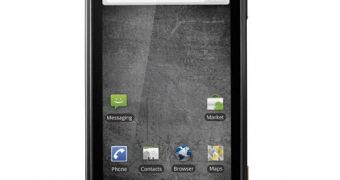Motorola DROID, the first handset mobile phone carrier Verizon Wireless will deliver to its subscribers with Google's Android operating system on board, as well as the first device in the world to sport the Android 2.0 version of the platform, is expected to become a huge success. Analysts or Android fans are not the only ones to say this, as Verizon is also sure that DROID will prove a strong competitor against Apple's iPhone, the most popular handset on the market.
However, the company is not confident only in Motorola DROID's capability to attract users, but also in the capacity its 3G network has for sustaining the strain DROID users will put on the airwaves. According to the carrier, its network will be able to handle the data usage from its customers, unlike AT&T's network and the usage of Apple's iPhone on it.
Big Red expects for the Motorola DROID to become the best-selling handset it has ever offered to users, and also hopes for the data traffic on its network to rise to unprecedented levels. “We’re encouraging it,” said Arvin Singh, VZW director of data sales for the Illinois-Wisconsin region, cited by telephonyonline. “We’re anticipating the Droid will be a blockbuster, but we’re not adding any new backhaul or new EV-DO carriers for the launch. We’re not anticipating the network will take a hit on this.”
As many of you might already know, AT&T has seen great demand for the Apple iPhone at each new launch, but its network was also affected each time by the increasing number of users that generated data traffic on the airwaves. The enormous surge in data traffic led to network bottlenecks and AT&T was forced to perform continuous upgrades to increase the network capacity so as to meet data traffic demand.
As for Verizon, the carrier says that its network has been built so as to handle this kind of stress. According to telephonyonline, Verizon's network has a great advantage over AT&T's, and that should help the carrier a lot in its quest. “CDMA downlink channels are only 1.25 MHz wide, compared to the 5 MHz used by AT&T’s HSPA network, but they support similar maximum capacities (3.1 Mb/s for Rev. A compared to 3.6 Mb/s for HSPA).”

 14 DAY TRIAL //
14 DAY TRIAL //